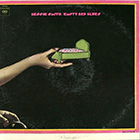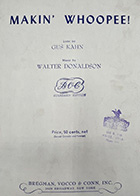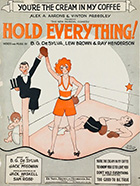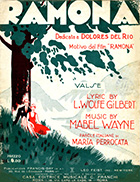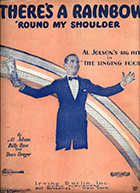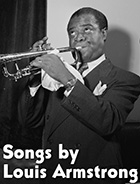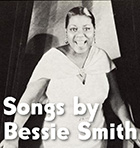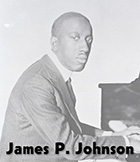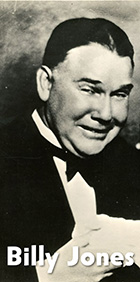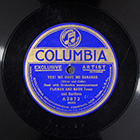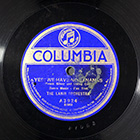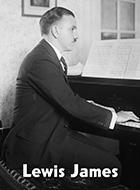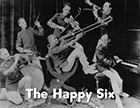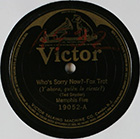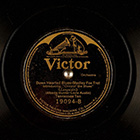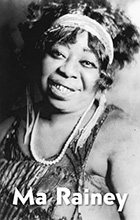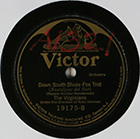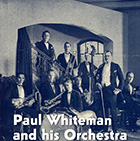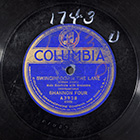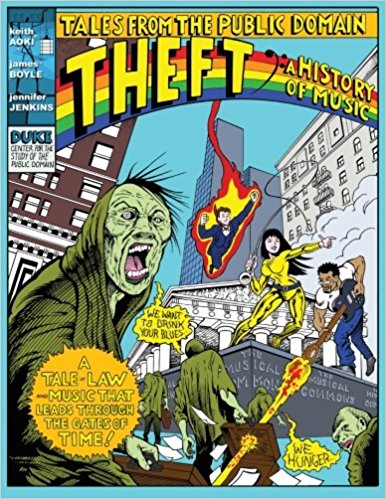
Public Domain Day 2024
January 1, 2024 is Public Domain Day: Works from 1928 are open to all, as are sound recordings from 1923!
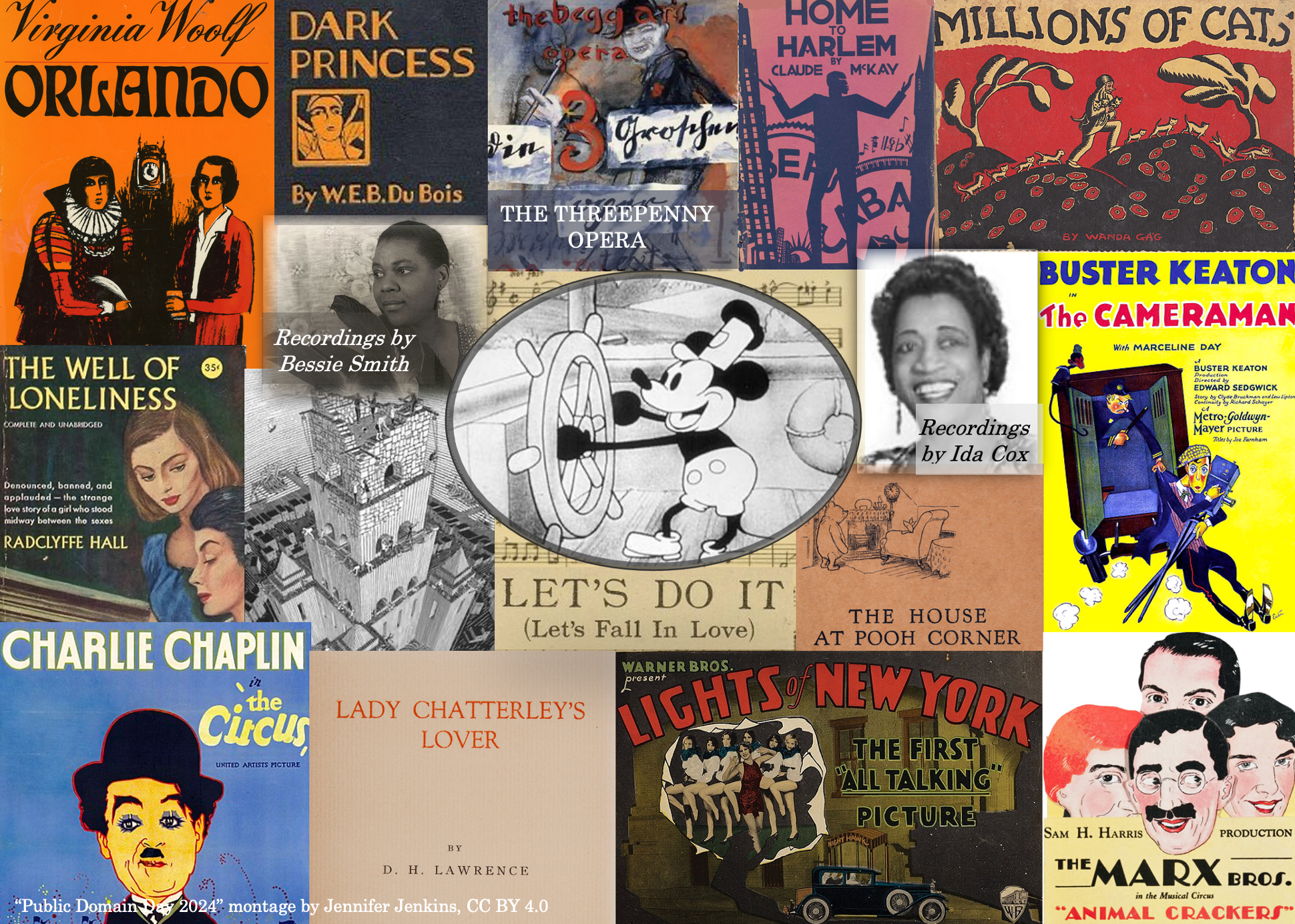
By Jennifer Jenkins
Director, Duke Center for the Study of the Public Domain
CC BY 4.0
Please note that this site is only about US law; the copyright terms in other countries may be different.[1]
On January 1, 2024, thousands of copyrighted works from 1928 will enter the US public domain, along with sound recordings from 1923. They will be free for all to copy, share, and build upon. This year’s highlights include Lady Chatterley’s Lover by D. H. Lawrence and The Threepenny Opera by Bertolt Brecht, Buster Keaton’s The Cameraman and Cole Porter’s Let’s Do It, and a trove of sound recordings from 1923. And, of course, 2024 marks the long-awaited arrival of Steamboat Willie – featuring Mickey and Minnie Mouse – into the public domain. That story is so fascinating, so rich in irony, so rife with misinformation about what you will be able to do with Mickey and Minnie now that they are in the public domain that it deserved its own article, “Mickey, Disney, and the Public Domain: a 95-year Love Triangle.” Why is it a love triangle? What rights does Disney still have? How is trademark law involved? Read all about it here.
Here is just a handful of the works that will be in the US public domain in 2024.[2] They were first set to go into the public domain after a 56-year term in 1984, but a term extension pushed that date to 2004. They were then supposed to go into the public domain in 2004, after being copyrighted for 75 years. But before this could happen, Congress hit another 20-year pause button and extended their copyright term to 95 years.[3] Now the wait is over. (To find more material from 1928, you can visit the Catalogue of Copyright Entries.)
Books and Plays
- D.H Lawrence, Lady Chatterley's Lover
- Bertolt Brecht, The Threepenny Opera (in the original German, Die Dreigroschenoper)
- Virginia Woolf, Orlando
- Erich Maria Remarque, All Quiet on the Western Front (in the original German, Im Westen nichts Neues)
- W.E.B. Du Bois, Dark Princess
- Claude McKay, Home to Harlem
- A. A. Milne, illustrations by E. H. Shepard, House at Pooh Corner (introducing the Tigger character)
- J. M. Barrie, Peter Pan; or the Boy Who Wouldn't Grow Up (because the play’s script was not “published” for copyright purposes until 1928; note that Barrie’s 1911 novel “Peter and Wendy” has been public domain since 1967)[4]
- Radclyffe Hall, The Well of Loneliness
- Evelyn Waugh, Decline and Fall
- Agatha Christie, The Mystery of the Blue Train
- Wanda Gág, Millions of Cats (the oldest American picture book still in print)
- Robert Frost, West-Running Brook
- Ben Hecht and Charles MacArthur, The Front Page
These are just a few of the thousands of works entering the public domain in 2024. They present a snapshot of the cultural struggles of the time, some of which seem decidedly relevant today: there are books that were banned for obscenity, a critique of the inhumanity of capitalist society, works from the Harlem Renaissance, and a reminder of the lingering trauma from World War I. There are works exploring gender fluidity and sexuality, including Orlando, a feminist classic about a character “liberated from restraints of time and sex,” and The Well of Loneliness, an exploration of lesbian love. There are literary classics and great theatrical works, bestsellers and works of high culture. There are even popular children’s books—cat lovers can rejoice over Millions of Cats and Tigger bouncing into the Hundred Acre Wood.
Films

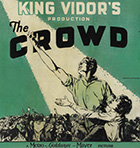


- Steamboat Willie and Plane Crazy (the silent version) (directed by Walt Disney and Ub Iwerks) [5]
- The Cameraman (directed by Edward Sedgwick and Buster Keaton)
- Lights of New York (directed by Bryan Foy; billed as “the first ‘all-talking’ picture”)
- The Circus (directed by Charlie Chaplin)
- The Passion of Joan of Arc (directed by Carl Theodor Dreyer)
- The Singing Fool (directed by Lloyd Bacon; follow-up to The Jazz Singer)
- Speedy (directed by Ted Wilde; Harold Lloyd’s last silent theatrical release)
- In Old Arizona (“100% all talking” film featuring singing cowboys)
- The Man Who Laughs (directed by Paul Leni; features a character who inspired the appearance of the Joker from Batman)
- Should Married Men Go Home? (directed by Leo McCarey and James Parrott; a Laurel and Hardy film)
- The Wind (directed by Victor Sjöström)
- The Wedding March (directed by Erich von Stroheim)
- The Crowd(directed by King Vidor)
- The Last Command (directed by Josef von Sternberg; Emil Jannings won the first Academy Award for Best Actor)
- Street Angel (directed by Frank Borzage; Janet Gaynor won the first Academy Award for Best Actress)
- Disney’s remaining Oswald the Lucky Rabbit cartoons (created by Walt Disney and Ub Iwerks; Oswald was an inspiration for Mickey Mouse)
Yes, Steamboat Willie is finally entering the public domain. Welcome, Mickey and Minnie Mouse! Read what this means here. But many more wonderful films will also be free of copyright. 1928 was part of the transitional period from silent films to “talkies,” and it brought us both some of the last great silent pictures and the “first ‘all-talking’ picture.” There are features from comedic giants such as Buster Keaton, Charlie Chaplin, Harold Lloyd, and Laurel and Hardy. There are films chosen for preservation in the National Film Registry because they are “culturally, historically, or aesthetically significant.” There are winners of some of the first Academy Awards. Sadly, many films from the era have been lost forever, while others survive only due to serendipitous stories of rediscovery. Please note that while the original footage from the listed films will be in the public domain, newly added material such as musical accompaniment might still be copyrighted. [6]
Musical Compositions
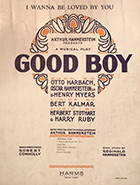
- Animal Crackers (musical starring the Marx Brothers; book by George S. Kaufman and Morrie Ryskind and lyrics and music by Bert Kalmar and Harry Ruby)
- Mack the Knife (original German lyrics by Bertolt Brecht and music by Kurt Weill; from The Threepenny Opera)
- Let’s Do It (Let’s Fall in Love) (Cole Porter; from the musical Paris)
- Sonny Boy (George Gard DeSylva, Lew Brown & Ray Henderson; from the film The Singing Fool starring Al Jolson)
- When You're Smiling (lyrics by Mark Fisher and Joe Goodwin and music by Larry Shay)
- Empty Bed Blues (J. C. Johnson)
- I Wanna Be Loved By You (lyrics by Bert Kalmar and music by Herbert Stothart and Harry Ruby; from the musical Good Boy)
- Makin’ Whoopee! (lyrics by Gus Khan and music by Walter Donaldson)
- You’re My Necessity, You’re The Cream in My Coffee (George Gard DeSylva, Lew Brown & Ray Henderson; from the musical Hold Everything!)
- I Can’t Give You Anything But Love, Baby (lyrics by Dorothy Fields and music by James Francis)
- Ramona (lyrics by L. Wolfe Gilbert and music by Mabel Wayne)
- There’s a Rainbow ‘Round My Shoulder (Al Jolson, Billy Rose, Dave Dreyer; from the film The Singing Fool)
- Beau Koo Jack (lyrics by Walter Melrose and music by Alex Hill and Louis Armstrong)
- Pick Pocket Blues (Bessie Smith)
This year’s musical line-up includes Broadway songs, jazz standards, early blues, and pop music addressing some familiar themes.[7] Only the musical compositions—the music and lyrics that you might see on a piece of sheet music—are entering the public domain, not the recordings of those songs, which are covered by a separate copyright.[8] The lyrics and music to Cole Porter’s Let’s Do It (Let’s Fall In Love) were published in 1928 and will be free for anyone to copy, perform, record, adapt, or interpolate into their own song. But the later recordings by Eartha Kitt, Lady Gaga, and others are still copyrighted. Note, however, that sound recording rights are more limited than composition rights—you can legally imitate a sound recording, even if your imitation sounds exactly the same, you just cannot copy from the actual recording.To hear some great adaptations of public domain songs and other material, visit WNYC’s Public Domain Song Project.
Sound Recordings from 1923
- Charleston (recorded by James P. Johnson)
- Yes! We Have No Bananas (recorded by Billy Jones; Furman and Nash; Eddie Cantor; Belle Baker; The Lanin Orchestra)
- Who’s Sorry Now (recorded by Lewis James; The Happy Six; The Original Memphis Five)
- Down Hearted Blues (recorded by Bessie Smith; Tennessee Ten)
- Lawdy, Lawdy Blues (recorded by Ida Cox)
- Southern Blues and Moonshine Blues (recorded by Ma Rainey)
- Down South Blues (recorded by Hannah Sylvester; The Virginians)
- Wolverine Blues (recorded by the Benson Orchestra of Chicago)
- Tin Roof Blues (recorded by The Original Memphis Five)
- That American Boy of Mine and Parade of the Wooden Soldiers (recorded by Paul Whiteman and his Orchestra)
- Dipper Mouth Blues and Froggie More (recorded by King Oliver’s Creole Jazz Band, featuring Louis Armstrong)
- Bambalina (recorded by The Ray Miller Orchestra)
- Swingin’ Down the Lane (recorded by the Isham Jones Orchestra; The Shannon Four; The Columbians)
In 2022, under a new law called the Music Modernization Act,[9] decades of sound recordings made from the advent of recording technology through the end of 1922 went into the public domain. In 2023 there was a pause, with no sound recordings entering the public domain. Now, in 2024, recordings from 1923 are open for legal reuse. You can download, remix, or use them in a soundtrack. Yes, these recordings are a century old, but better late than never! As you look through the list above, note that only the 1923 recordings made by these artists are entering the public domain, not their later recordings.
To listen to old recordings, go to the Library of Congress National Jukebox—in 2024 the Library of Congress will make all of the 1923 recordings in its collection available for download from this site, while recordings from 1924 forward will be streaming-only until they are in the public domain.
Copyright will also expire over works of art such as M.C. Escher’s Tower of Babel woodcut. While we were able to locate the copyright records indicating that Escher’s work is copyrighted through the end of 2023, we did not find definitive copyright information for other notable artworks. What we do know is that art published in 1928 – including drawings, paintings, and photography – will be in the public domain in 2024, but many works were actually copyright-free earlier due to noncompliance with the notice and renewal “formalities” that copyright law used to require.

Keep reading to learn more about the public domain! You can use the links below to jump to different sections of this website.
Why Celebrate the Public Domain?
Some material is born in the public domain. This includes ideas, facts, and raw data, which can never be copyrighted. It also includes official works of the US government such as legislation, legal opinions, and NASA images.[10] But for copyrighted culture, the public domain arrives only after a long wait. Why celebrate? When works go into the public domain, they can legally be shared, without permission or fee. Community theaters can screen the films. Youth orchestras can perform the music publicly, without paying licensing fees. Online repositories such as the Internet Archive, HathiTrust, Google Books, and the New York Public Library can make works fully available online. This helps enable access to cultural materials that might otherwise be lost to history. 1928 was a long time ago and the vast majority of works from 1928 are not commercially available. You couldn’t buy them, or even find them, if you wanted. When they enter the public domain in 2024, anyone can rescue them from obscurity and make them available, where we can all discover, enjoy, and breathe new life into them.
The public domain is also a wellspring for creativity. The whole point of copyright is to promote creativity, and the public domain plays a central role in doing so. Copyright law gives authors important rights that encourage creativity and distribution—this is a very good thing. But it also ensures that those rights last for a “limited time,” so that when they expire, works go into the public domain, where future authors can legally build on the past—reimagining the books, making them into films, adapting the songs and movies. That’s a good thing too!
Think of all the films, cartoons, books, plays, musicals, video games, songs, and other works based on Greek mythology, or on the works of Shakespeare. Think of the literature that has built on Jane Austen’s novels, Mary Shelley’s Frankenstein, Bram Stoker’s Dracula, Lewis Carroll’s Alice in Wonderland, or the music that is based on Pachelbel’s Canon. As explained in a New York Times editorial: “When a work enters the public domain it means the public can afford to use it freely, to give it new currency . . . [public domain works] are an essential part of every artist’s sustenance, of every person’s sustenance.”
Shakespeare’s works have given us everything from The Lion King and Rosencrantz and Guildenstern Are Dead (from Hamlet) to 10 Things I Hate About You and Kiss Me Kate (from The Taming of the Shrew) to West Side Story (from Romeo and Juliet). That is the promise of the public domain. Who knows what the works entering the public domain in 2024 might inspire? As with Shakespeare, the ability freely to reinvent these works may spur a range of creativity, from the serious to the whimsical, and in doing so allow the original artists’ legacies to endure. And of course Shakespeare himself, who predated copyright law, borrowed heavily from his predecessors. One work inspires another. That is how the public domain feeds creativity.
Let me take just one example: feminist remakes of public domain works. It is striking how often remakes have transformed the original by giving voices and agency to female characters. For contemporary examples, some point to the movie Poor Things currently playing in theaters (inspired by Frankenstein; Shelley's original has also been called a feminist text) and Natalie Haynes’ 2023 book Stone Blind (reimagining the Medusa myth, just as many other works – including Margaret Atwood’s The Penelopiad – have revisited Greek mythology through a different lens). After F. Scott Fitzgerald’s The Great Gatsby went into the public domain in 2021, Nghi Vo’s The Chosen and the Beautiful reinvented the book from the perspective of a fascinating Jordan Baker character, and Jillian Cantor’s Beautiful Little Fools retells the Gatsby story through the voices of three of its female characters (Jordan, Daisy Buchanan, and Catherine McCoy). This kind of retelling does what art does best; gets us to reimagine a situation from a different, often neglected perspective. Those retellings are exactly what the public domain allows.
The United States is a country that is always reimagining itself and retelling its own story. One way it does so is through its iconic works of fiction. As Gatsby was set to enter the public domain, Blake Hazard, Fitzgerald’s great-granddaughter, said: “We’re now looking to a new period and trying to view it with enthusiasm, knowing some exciting things may come.” And that is just what happened. The New York Times reported a wealth of new editions with introductions by the likes of Times critic and Pulitzer-Prize winner Wesley Morris and Harvard scholar David J. Alworth, bringing “fresh analysis, nearly a century later, of what our ideas of ‘American’ now entail.” The book was adapted into TV shows, animations, graphic novels, and musicals. There were new works such as Michael Farris Smith’s prequel Nick, which tells the backstory of Nick Carraway, Self-Made Boys, a young-adult “Great Gatsby remix” centering on trans love, The Gay Gatsby, and The Great Gatsby Undead (the zombie edition). The hosts of Planet Money even created an audio book, reading the entire book on the air.
Winnie-the-Pooh’s entry into the public domain in 2022 likewise sparked a range of creativity. The most publicity went to celebrity and incongruous reuses, from Ryan Reynolds’ “Winnie-the-Screwed” ad for Mint Mobile to a comic strip in which Pooh celebrates his nudity, to the horror film Winnie-the-Pooh: Blood and Honey. A sustainable toilet paper company even turned it into a statement about deforestation with Winnie-the-Pooh: the Deforested Edition, in which the Hundred Acre Wood has been cut down. Pooh and Christopher Robin can’t climb trees. Owl’s home is a mere stump.
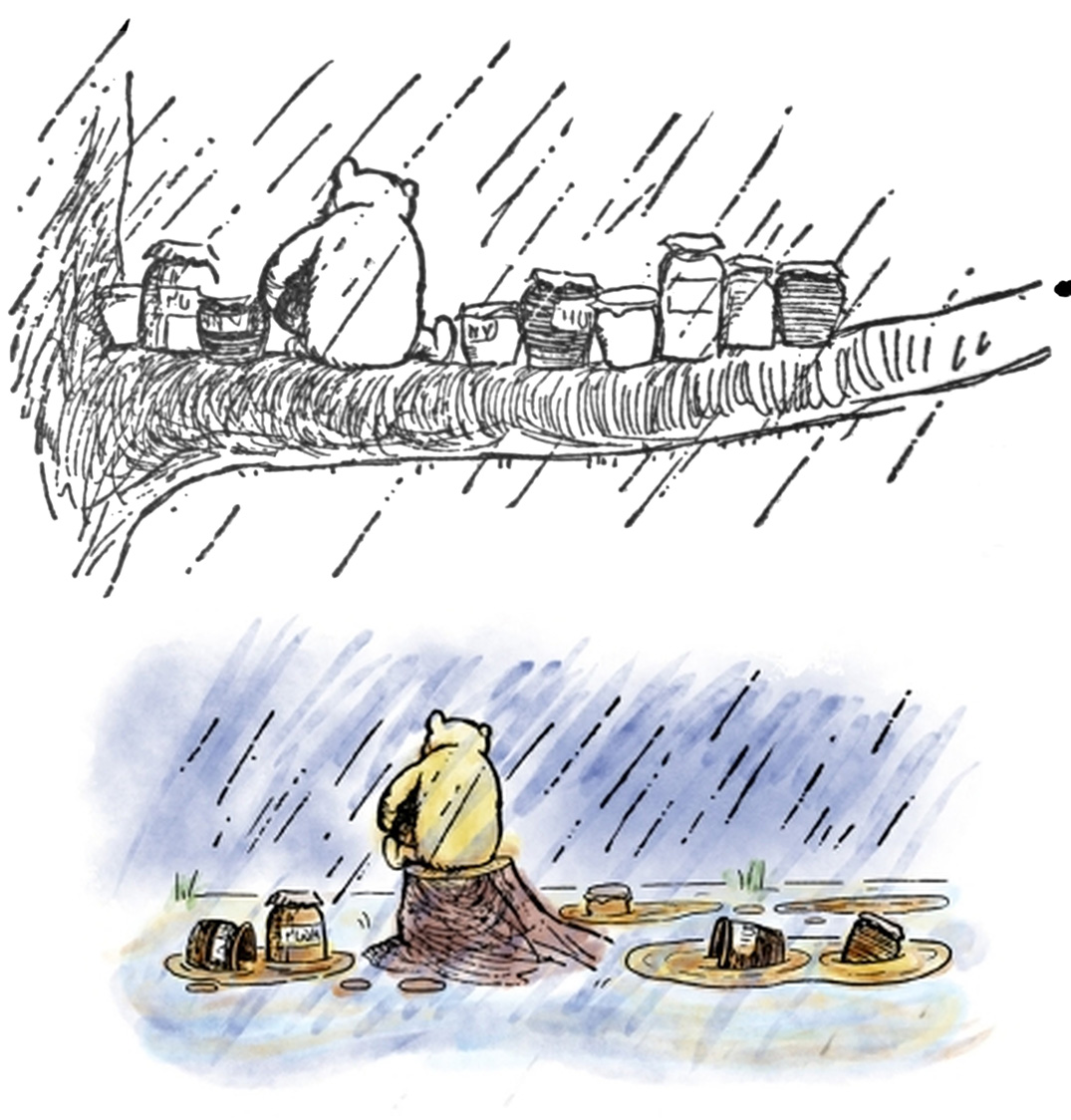
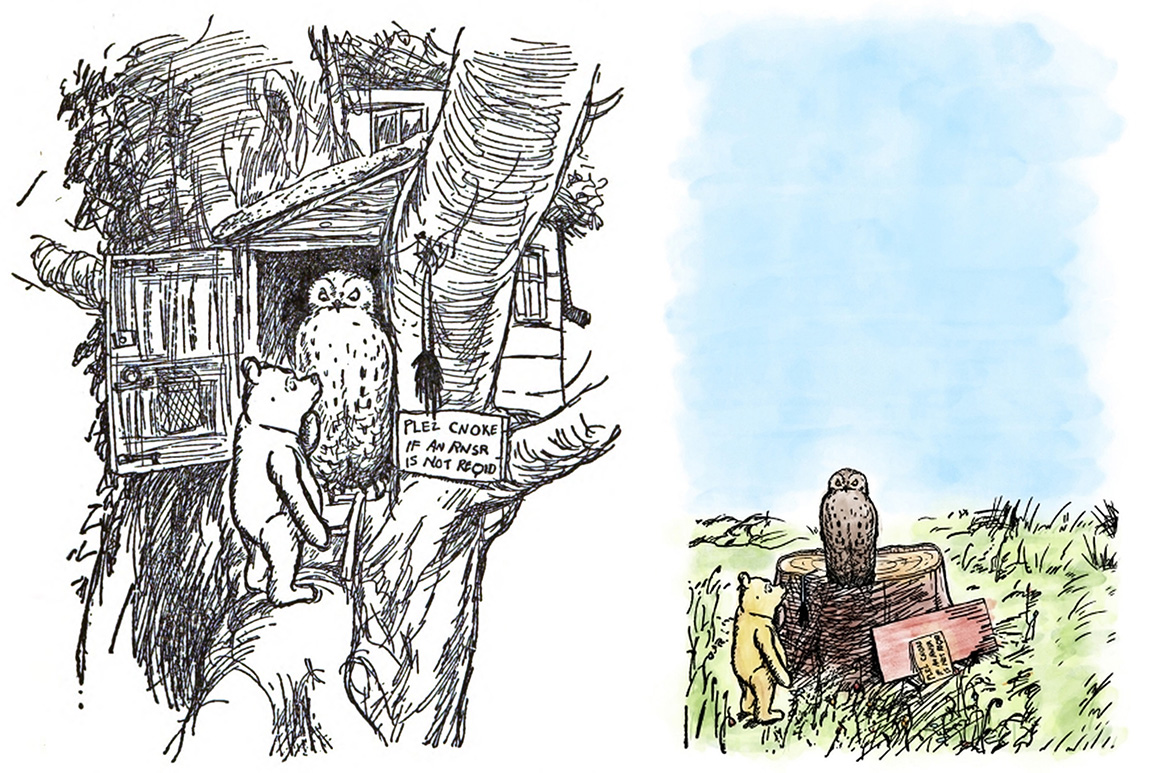
Images from the original Winnie-the-Pooh (1926) alongside images from Winnie-the-Pooh: the Deforested Edition (2023)
These are the kinds of uses that gain public attention; there are many more creators who built upon the newly public-domain Pooh book—I know this because they have been kind enough to send me cuddlier drawings and poems such as this that did not generate as much buzz, but do reflect how Pooh inspired artists and writers on a smaller scale.
Are all of these new works critically acclaimed or something of which rights holders would approve? Some yes, some no. But they are part of our culture, and time will tell whether they will be rewarded in either the commercial marketplace or the marketplace of ideas. You can look at the Shakespeare or Jane Austen remakes that have stood the test of time to get an idea of public domain reuses with enduring appeal. And just as Pride and Prejudice and Zombies did not diminish the luster of Jane Austen’s novel (at least for me), the original works entering the public domain more recently—from Gatsby to Winnie-the-Pooh—remain intact
The public domain gives us not just material to build upon but material to learn from, with lessons both joyful and sobering. This year’s works offer a temporal cross section of our cultural past, capturing the era in its complexity. In 1928 the Harlem Renaissance was in full swing, but there was also legally-enforced segregation, and many works from the era contain racial slurs and demeaning depictions.[11] Unfortunately, some of the films entering the public domain show performances in blackface, a distressing reminder of the racist stereotypes that dominated portrayals of African-Americans in popular culture. When such works enter the public domain, anyone is free to grapple with them, to critique, explain, and even remake them. The public domain is a repository of our history—a record of all our culture, not just the parts we like. Indeed, it is precisely because the works are no longer subject to control by their copyright holders that both their beauty and their ugliness can be freely explored by today’s scholars and citizens.
The Tip of the (Melting) Iceberg
Many of the works featured above are famous; that is why we included them. Their copyright holders benefitted from 20 more years of copyright because the works had enduring popularity and were still earning royalties. But when Congress extended the copyright term for works like Steamboat Willie, it also did so for all of the works whose commercial viability had long subsided. For the vast majority—probably 99%—of works from 1928, no copyright holder financially benefited from continued copyright. Yet they remained off limits, for no good reason. A Congressional Research Service report indicated that only around 2% of copyrights between 55 and 75 years old retain commercial value. After 75 years, that percentage is even lower. Most older works are “orphan works,” where the copyright owner cannot be found at all.
Now that these works are in the public domain, anyone can make them available to the public. This enables access to our cultural heritage—access to materials that might otherwise be forgotten. 1928 was a long time ago. The majority of works from that year are out of circulation. When they enter the public domain in 2024, anyone can republish or post them online. (Empirical studies have shown that public domain books are less expensive, available in more editions and formats, and more likely to be in print—see here, here, and here.) The works listed above are just the tip of the iceberg. Many more works are waiting to be rediscovered.
Unfortunately, part of this iceberg has already melted. As the story of silent films shows, the fact that works from 1928 are legally available does not mean they are actually available. Much of our silent film heritage has been lost— destroyed, discarded, or allowed to decay.[12] Some older films have disintegrated, rotting in their cans, while preservationists eagerly waited for them to enter the public domain so that they could legally digitize them, evidence of what long copyright terms do to the conservation of cultural artifacts.[13] For the material that has survived, however, the long-awaited entry into the public domain is still something to celebrate.
Another part of the iceberg includes works from 1928 and later that may already be in the public domain because the copyright owners did not comply with the “formalities” that used to be necessary for copyright protection. In the past, your work went into the public domain if you did not include a copyright notice—e.g. “Copyright 1928 Walt Disney”—when publishing it, or if you did not renew the copyright after 28 years. We know that works published in 1928 and earlier are out of copyright in 2024, but so are works published from 1929-1977 without a copyright notice, works published from 1978 through 3/1/1989 without a notice and without subsequent registration within five years (the registration fixed the lack of copyright notice), and works published from 1929-1963 with a notice but without a copyright renewal.
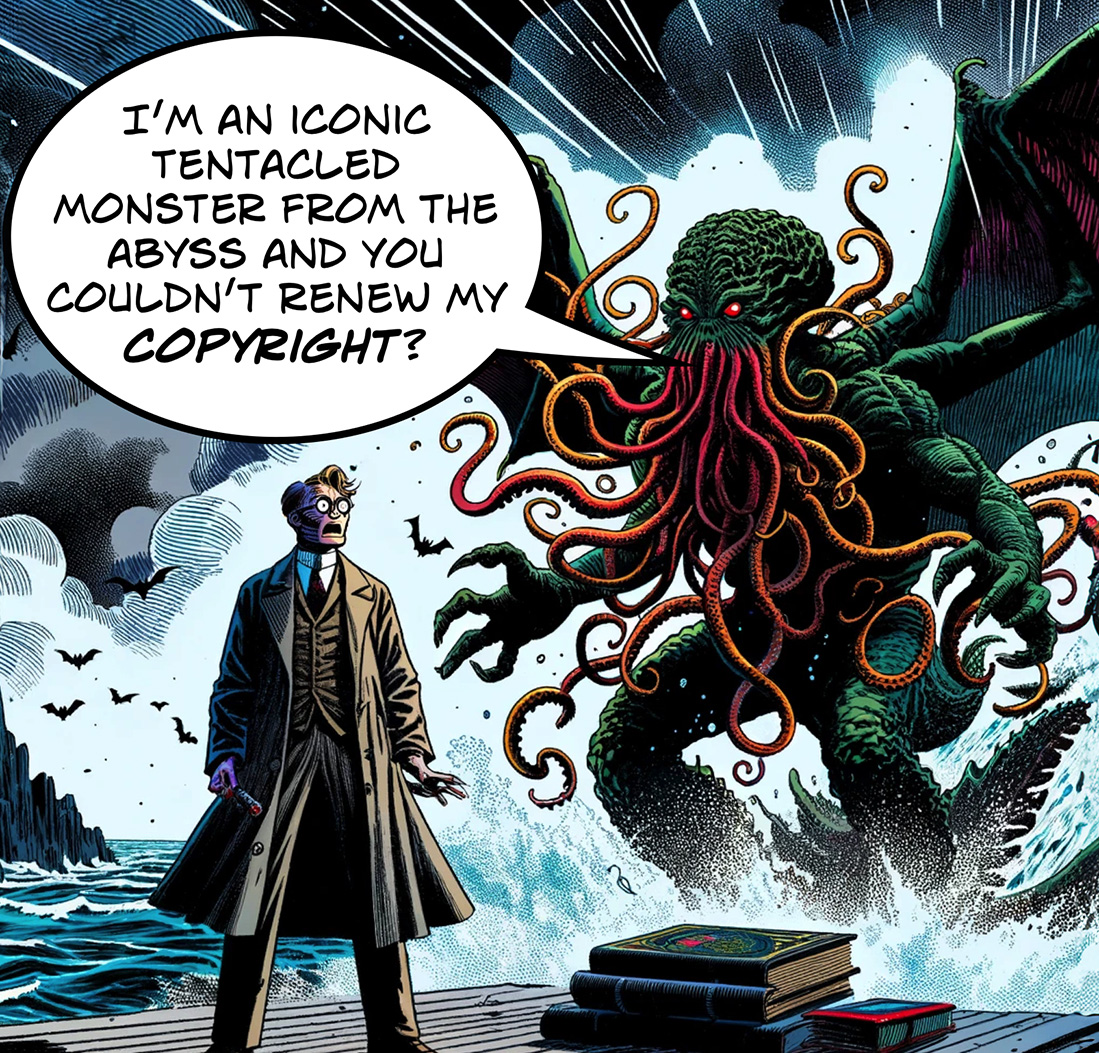 For example, the 1928 film that inspired the title of Steamboat Willie – Buster Keaton’s Steamboat Bill, Jr. – went into the public domain in 1956 due to non-renewal. The same is true of H. P. Lovecraft’s short story “The Call of Cthulhu.” It was published in the February 1928 issue of the pulp magazine Weird Tales. While the March and April issues of Weird Tales had their copyrights renewed, it appears that the February issue did not, letting its “obscene and incredible monstrosity” slither into the public domain in 1956.
For example, the 1928 film that inspired the title of Steamboat Willie – Buster Keaton’s Steamboat Bill, Jr. – went into the public domain in 1956 due to non-renewal. The same is true of H. P. Lovecraft’s short story “The Call of Cthulhu.” It was published in the February 1928 issue of the pulp magazine Weird Tales. While the March and April issues of Weird Tales had their copyrights renewed, it appears that the February issue did not, letting its “obscene and incredible monstrosity” slither into the public domain in 1956.
Current copyright law no longer has these requirements. Even though these works might technically be in the public domain, however, as a practical matter, users sometimes have to assume they’re still copyrighted (or risk a lawsuit) because the relevant copyright information is difficult to find—older records can be fragmentary, confused, or lost. That’s why Public Domain Day is so significant. On January 1, 2024, the public will know for sure that all works published in 1928 and earlier are free for use without tedious or inconclusive research to find out if the copyright holder complied with formalities or resolve date discrepancies. Still, it is worth shining a light on this “invisible public domain”—including all of the works that entered the public domain years ago due to non-renewal.[14]
This analysis highlights an additional point: the sheer complexity of the rules we have set to govern our collective culture.[15] That harms both citizens and current artists, who can’t know what works they are and are not allowed to use without expensive professional advice. We have tried to provide some legal background here and in the footnotes, but sometimes it is easier to find Woozles and Heffalumps than definitive copyright information.
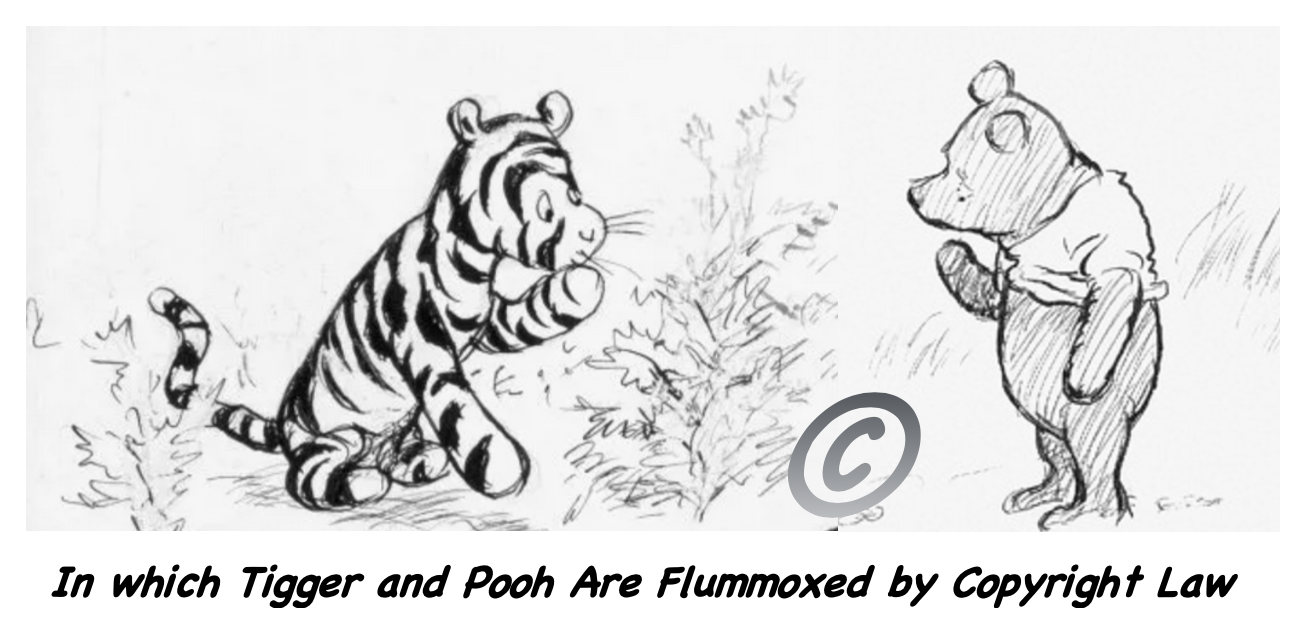
The Copyright Term Extension Blues
While the US finally turned on the public domain spigot in 2019, after a 20-year drought, Canada’s government recently decided to turn its spigot off. In 2022, Canada froze its public domain for 20 years with its C-19 copyright law—doing the same thing the US did in 1998, with all of the negative effects that have now been well documented.
The verdict is in: adding an extra 20 years to the US copyright term was a “big mistake.” This is not a quote from someone who is equivocal about copyright; it is a quote from the former head of our Copyright Office. Another former Director of the Copyright Office proposed shortening the copyright term by 20 years unless copyright owners “assert their continued interest in exploiting the work by registering with the Copyright Office in a timely manner.” Copyright holders such as Disney could readily secure “the full benefit of the additional twenty years,” while all of the works no longer being exploited would enter the public domain, fulfilling copyright’s goal of benefiting the public.
Indeed, there is a consensus among policymakers, economists, and academics that lengthy copyright extensions impose costs that far outweigh their benefits. Why? The benefits are minuscule—economists (including five Nobel laureates) have shown that term extension does not spur additional creativity. At the same time, it causes enormous harm, locking away millions of older works that are no longer generating any revenue for the copyright holders. Films have disintegrated because preservationists can’t digitize them. The works of historians and journalists are incomplete. Artists find their cultural heritage off limits. (See studies like the Hargreaves Review commissioned by the UK government, empirical comparisons of the availability of copyrighted works and public domain works, and economic studies of the effects of copyright.)
So…no one would be silly enough to keep extending copyright, right? Wrong! Countries such as Canada, New Zealand, and Japan have recently lengthened their copyright terms by 20 years—not as a result of reasoned debate, but to comply with trade deals that require harmonization of copyright terms. With harmonization, there is a catch: countries are always made to harmonize with the longer term, never the shorter term, even if the shorter term is a better choice for both economic and policy reasons. As Professor Michael Geist explained, the Canadian term extension will “cost Canadian education millions of dollars and would delay works entering the public domain for an entire generation,” yet the government chose to do so without mitigation measures “to reduce the economic cost and cultural harm that comes from term extension.” Canada could have given the full copyright term to rights holders who wanted it while allowing works that were no longer being commercially exploited—including orphan works—to enter the public domain, but the government rejected these recommendations.
This is irrational. It would be more efficient to simply levy a new tax on the public and give the proceeds to the small percentage of copyright holders whose works are still making money after a life-plus-50 term. The term extensions not only transfer wealth to a tiny subset of rights owners, but also lock away the remaining works from future creators and the public. Nonetheless, despite overwhelming evidence that term extension does more harm than good, countries are still extending their copyrights. Even as we celebrate a new crop of public domain works, it is important to realize that the global public domain is still shrinking. This makes an understanding of its vital contributions—to creativity, access, education, history—all the more important.
Conclusion
Each year, I create this guide to the works that will be entering the US public domain. This year is especially symbolic because of Mickey Mouse’s long-anticipated entry into the public domain. Each year’s site is a celebration, but once again it is a bittersweet one.
We celebrate the emergence of thousands works into the public domain, where everyone can build on them, remake them, present new versions of them, or use them for education or simply enjoyment. The research is complicated and mind-numbingly finicky—and we are lawyers whose professional expertise is copyright and the public domain; further proof of the barriers that poorly chosen copyright regimes can present to those who want to obey the law but cannot easily find out what material is free to use and what is not. A clearer system would benefit us all: artists, citizens and entrepreneurs. But it is not the complexity of the research that provides the bittersweet sentiment; our annual review gets a gratifying degree of attention and a Center for the Study of the Public Domain that was unwilling to…study the public domain would be a strange beast indeed.
The melancholy comes from the unnecessary losses that our current system causes—the vast majority of works that no longer retain commercial value and are not otherwise available, yet we lock them all up to provide exclusivity to a tiny minority. Those works which, remember, constitute part of our collective culture, are simply off limits for use without fear of legal liability. Since most of them are “orphan works” (where the copyright owner cannot be found) we could not get permission from a rights holder even if we wanted to. And many of those works do not survive that long cultural winter, as with the lost silent films mentioned earlier. Professor Hal Abelson, the MIT computer scientist, once asked: “What does it mean to be human if we don’t have a shared culture? And what does a shared culture mean if you can’t share it?” On Public Domain Day, that act of grateful sharing begins for another year of our culture, something to celebrate indeed. Yet we should also spare a moment to regret that which we have lost.
Want to learn more about the public domain? Here is the legal background on how we got our current copyright terms (including summaries of court cases), why the public domain matters, and answers to Frequently Asked Questions. You can also read James Boyle’s book The Public Domain: Enclosing the Commons of the Mind (Yale University Press, 2008)—naturally, you can read the full text of The Public Domain online at no cost and you are free to copy and redistribute it for non-commercial purposes.
More information on the copyright term can be found on this excellent chart on Copyright Term and the Public Domain in the United States. For additional guidance from the Copyright Office, see its circulars on Duration of Copyright, How to Investigate the Copyright Status of a Work, and Copyright Restoration Under the URAA. For a detailed guide to identifying public domain material, you can purchase Stephen Fishman’s The Public Domain: How to Find & Use Copyright-Free Writings, Music, Art & More. You can also read “In Ambiguous Battle: The Promise (and Pathos) of Public Domain Day,” an article by Center Director Jennifer Jenkins revealing the promise and the limits of various attempts to reverse the erosion of the public domain, referring to a previous Public Domain Day.
[1] Our featured works are only entering the public domain under US copyright law. The copyright term for older works is different in other countries. In countries that follow the “rule of the shorter term” for foreign works, some of the works featured above – including Steamboat Willie – should also be public domain because the copyright term in the US has expired before the life-plus-70 term in those countries. Based on EU law and UK law, it appears that the first iterations of Mickey and Minnie Mouse from 1928 are also public domain in the UK and much of the EU, with the exception of members states such as Germany that have special rules. Generally, in the EU, works from authors who died in 1953 are going into the public domain in 2024 after a life-plus-70 year term. So Eugene O’Neill’s play Long Day’s Journey into Night will be in the public domain there. But in the US, that play was published posthumously in 1956 and its copyright does not expire until 2052. Conversely, if you are in the US, Agatha Christie’s Poirot novel The Mystery of the Blue Train enters the US public domain in 2024. But in the UK, Agatha Christie’s works are still copyrighted (because she is British, the rule of the shorter term does not apply and instead the UK life-plus-70 term applies). The Threepenny Opera (Die Dreigroschenoper) will be public domain in the US in 2024, but in the EU it is still copyrighted until 2044 (if the law considers Elisabeth Hauptmann to be Brecht’s co-author). As a general matter, under the principle of lex loci delicti, users are governed by the law in the jurisdiction where they are using the creative work. See Itar-Tass Russian News Agency v. Russian Kurier, Inc., 153 F.3d 82 (2d Cir. 1998). But note that this inquiry can be more complicated and fact-specific, depending on the circumstances surrounding the use.
[2] Only the original works published in 1928 are entering the US public domain. Later versions of them—adaptations, movies, or translations—may still be copyrighted. While the original German version of The Threepenny Opera (Die Dreigroschenoper) is entering the US public domain in 2024, the newly copyrightable material in the 1954 English translation by Marc Blitzstein is not public domain until 2050. Similarly, even though the original German version of All Quiet on the Western Front (Im Westen nichts Neues) from 1928 is in the public domain, translations from later years may still be copyrighted. In addition, in the US, only the author’s works from 1928 and earlier are in the public domain, not all of the other work published by that author. While you are free to use the lyrics and music from Let’s Do It (Let’s Fall in Love), later songs by Cole Porter are still copyrighted.
[3] The 1998 Copyright Term Extension Act gave works published or registered from 1923 through 1977 a 95-year term, expiring on January 1 after the conclusion of the 95th year. Doing the math, works from 1928 were copyrighted for 95 years—through 2023—and are in the public domain January 1 2024. (Works that were never published or registered have a different term – in the US, unpublished works from authors who died in 1953 will be entering the public domain after a life-plus-70 term.) Works published before 1978 had to meet certain requirements to be eligible for the 95-year term—they all had to be published with a copyright notice, and works from before 1964 also had to have their copyrights renewed after an initial 28-year term. The word “published” is important and has a special meaning under copyright law. It refers to when the work was sold or distributed to the general public with the authority of the copyright owner. Determining publication status can be complicated, however, and vary depending on the kind of work—with music from before 1978, for example, only distribution in written form counted as a publication. In the US, works created since 1978 are treated differently from those published before 1978. Works by natural persons from 1978 forward have a life-plus-70 term, unless they are works of corporate authorship, which are copyrighted for 95 years after publication.
The works on our lists are in the public domain because of either a 1928 registration or publication with a 1928 copyright notice. For most of the featured works we were also able to track down the renewal data indicating that they are still in-copyright through the end of 2023 and affirmatively entering the public domain in 2024.
Foreign works from 1928 such as D. H. Lawrence’s Lady Chatterley’s Lover and Bertolt Brecht’s The Threepenny Opera (Die Dreigroschenoper) are copyrighted until 2024 because of a provision that, in 1996, restored copyright over certain foreign works that were in the public domain because of non-compliance with notice or renewal requirements. Such works were still copyrighted in the US until 2024 if 1) they complied with US notice and renewal formalities, 2) they were published in the US within 30 days of publication abroad, or 3) if neither of these are true, they were still copyrighted in their home country as of 1/1/96. If the owners of copyright in foreign works filed a Notice of Intent to Enforce (NIE) their restored copyright you can find that information here. You can also find copyright restoration records in the Copyright Office records or the Copyright Office’s new search portal here.
[4] Peter Pan; or, the Boy Who Wouldn’t Grow Up is finally entering the public domain in the US, despite the play having been performed since 1904 and the Peter Pan novel being published in 1911. Why the delay? Because the play’s script was not “published” for copyright purposes until 1928, pushing back its copyright expiration until 2024. It will be public domain in the US, but not in the United Kingdom, where there is a special provision giving the Great Ormond Street Hospital for Children – to which J.M. Barrie assigned his copyright – the right to receive royalties from the play in perpetuity (just royalties, not the right to stop others from using the play).
[5] Steamboat Willie was not the only Mickey Mouse film from 1928. The mouse appeared in two other films shown the same year—silent versions of Plane Crazy and The Gallopin’ Gaucho. The data in the Catalog of Copyright Entries indicates that the silent version of Plane Crazy is public domain in 2024 but we could not find similar data for The Gallopin’ Gaucho. While the original silent version of Plane Crazy is not available, we assume that the footage is the same or similar to the footage in the publicly available version that added sound the subsequent year. The copyright notices on the available copies of those films, which were released after sound was added, say MCMXXIX, or 1929, so that is when the sound versions enter the public domain. Disney’s registrations and renewals for those same films claim a 1930 date, but if the date in the copyright notice is earlier than the registration date, the earlier date controls, so they are in the public domain in 2025. (According to the 1960 Copyright Law Revision Notice of Copyright Study, date discrepancies are resolved “in favor of the public” and the “term of protection is computed from the earlier date.” The 1960 Copyright Law Revision Copyright Renewal Study adds that “when the copyright notice on a published work contains a date earlier than the year when copyright was actually secured, the first term, and hence the renewal time limits, are computed from the last day of the year in the notice.”)
[6] The 1928 version of Charlie Chaplin’s The Circus is public domain, but newly added material in its 1960s rerelease, including the new score, is still copyrighted. However, the later copyright only covers newly added creative material. The original content from the 1928 work remains free. If a film has been restored or reconstructed, only original and creative additions are eligible for copyright; if a restoration faithfully mimics the preexisting film, it does not contain newly copyrightable material. Putting skill, labor, and money into a project is not enough to qualify it for copyright. The Supreme Court has made clear that “the sine qua non of copyright is originality.”
[7] Some lists of works from 1928 include George Gershwin’s American in Paris and Maurice Ravel’s Bolero because they were written and performed in 1928, but the copyright records show a date of 1929, making them public domain in 2025. Under copyright law at the time, musical compositions were not copyrighted until a manuscript was published with a copyright notice, so in an abundance of caution we are not listing them unless we can find sheet music with a 1928 copyright notice.
[8] US copyright law treats musical compositions and sound recordings differently. A composition consists of the lyrics and music that you might see on a piece of sheet music. A sound recording is the embodiment of a particular performance of that composition, fixed on media such as vinyl records or on digital audio files. If I write a song called “Public Domain Day!” and you record it, I get the copyright over the composition and you get a separate copyright over your recording of my song. Note that US copyright law allows you to cover a song without permission while it is still copyrighted under the “compulsory license” in 17 U.S.C. § 115, so long as you do not “change the basic melody or fundamental character” of the original song and pay a pre-set royalty rate. When a song is in the public domain you can make covers without complying with this provision, and you can also make other adaptations, performances, and interpolations.
[9] The Music Modernization Act’s “Classics Protection and Access Act” established a timeline for old recordings to enter the public domain. Recordings first published between 1923–1946 are public domain in January 2024–2047 (the year after a 100-year term). Then there is a ten-year pause from 2048–2058. After that, recordings first published between 1947–1956 are public domain in January 2058–2067, after a 110-year term. The term for all remaining recordings first fixed from 1957 until February 15, 1972 ends on February 15, 2067. Note that the term of protection for sound recordings in other countries is different from the one in the US: in the EU it is 70 years, and elsewhere it is 50 years.
[10] The category of “born in the public domain” also includes official works of the US government such as legislation, regulations, legal opinions, hearings, and speeches. As government works, the images from the James Webb telescope, the NASA collections NASA on The Commons (flickr) and NASA image and video library, the famous “Earthrise” photograph taken by astronaut William Anders, and the Farm Security Administration - Office of War Information Photograph Collection (a pictorial record of American life from 1935-1944) are all copyright-free. Another category of public domain material consists of works that creators choose to dedicate to the public domain, and many have done so using Creative Commons’ CC0 tool.
[11] There was also rampant exploitation of Black talent: Black musicians, for example, were routinely excluded from copyright’s benefits and denied both recognition and compensation for their work. To learn more about the unequal treatment of Black artists, you can read the excellent scholarship of Professor Olufunmilayo Arewa, including From J.C. Bach to Hip Hop: Musical Borrowing, Copyright and Cultural Context, Blues Lives: Promise and Perils of Musical Copyright and Writing Rights: Copyright’s Visual Bias and African American Music; Professor Kevin J. Greene, including Copyright, Culture & (and) Black Music: A Legacy of Unequal Protection and “Copynorms,” Black Cultural Production, and the Debate over African-American Reparations; and Professor Lateef Mtima, including Intellectual Property, Entrepreneurship and Social Justice: From Swords to Ploughshares.
[12] The Library of Congress study The Survival of American Silent Feature Films: 1912–1929 found that 75% of American silent films are lost to history in their complete form. A search in its silent film database shows just how many films are lost, including many from 1928.
[13] There is a narrow provision in the law allowing for some restorations, but it is limited and does not safeguard the work of many preservationists. The Library of Congress report confirms that “[t]he public domain status of some films has encouraged their survival,” referring to films that came out of copyright because the rights were not renewed, which allowed others to invest in their preservation. You can read our analysis of how long copyright terms thwart film preservation efforts here.
[14] Millions of books published from 1928–1963 are already in the public domain because the copyright owners did not renew the rights. Efforts have been underway to unlock this “secret” public domain, but compiling a definitive list of those titles is a daunting task. The relevant registration and renewal information is in the 450,000-page Catalog of Copyright Entries (“CCE”). Confirming that works without apparent renewals are in the public domain involves additional complexities. Happily, the HathiTrust Copyright Review Program reports: “Since 2008, over 195 reviewers at 53 institutions have reviewed 900,000 items, determining that more than 509,000 are no longer protected by copyright and have entered the public domain.” These items can therefore be made available online.
[15] Copyright law is complex. It has been updated many times, with each revision adding to the complexity. The lawmaking process has not produced a set of rules that is comprehensible to regular citizens (or even lawyers), and we do not have clear and comprehensive records of copyright ownership.
Written by Jennifer Jenkins. Special thanks to Sean Dudley for researching works and images from 1928 and creating video content and to Michael Wright and Grant Young for building this site.
![]() Public Domain Day 2024 by Jennifer Jenkins, Director of Duke Law School’s Center for the Study of the Public Domain, is licensed under Creative Commons Attribution 4.0 License.
Public Domain Day 2024 by Jennifer Jenkins, Director of Duke Law School’s Center for the Study of the Public Domain, is licensed under Creative Commons Attribution 4.0 License.
This website is not official legal advice. Instead, it is a summary of United States law relevant to the public domain and a guide to some of the works entering the public domain in 2024.





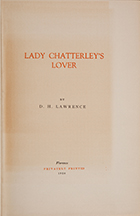
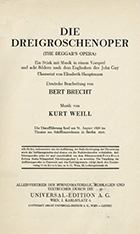
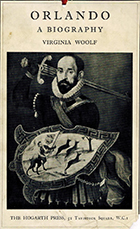
.jpg)
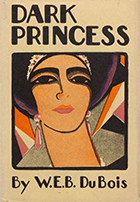

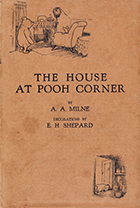
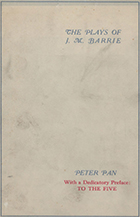

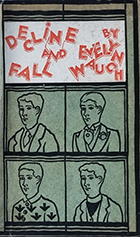



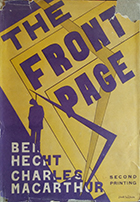

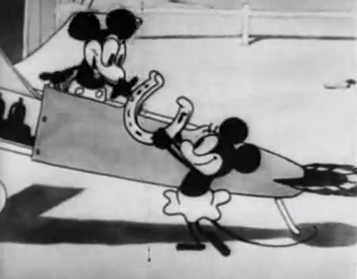
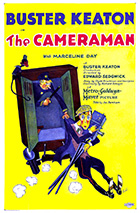
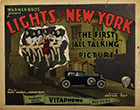
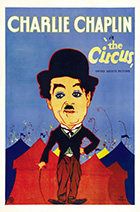
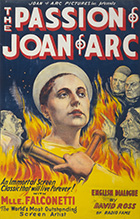
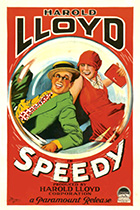
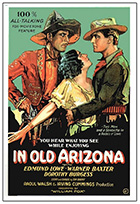
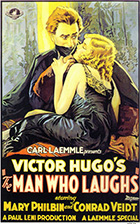

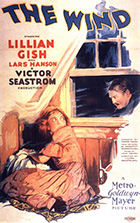

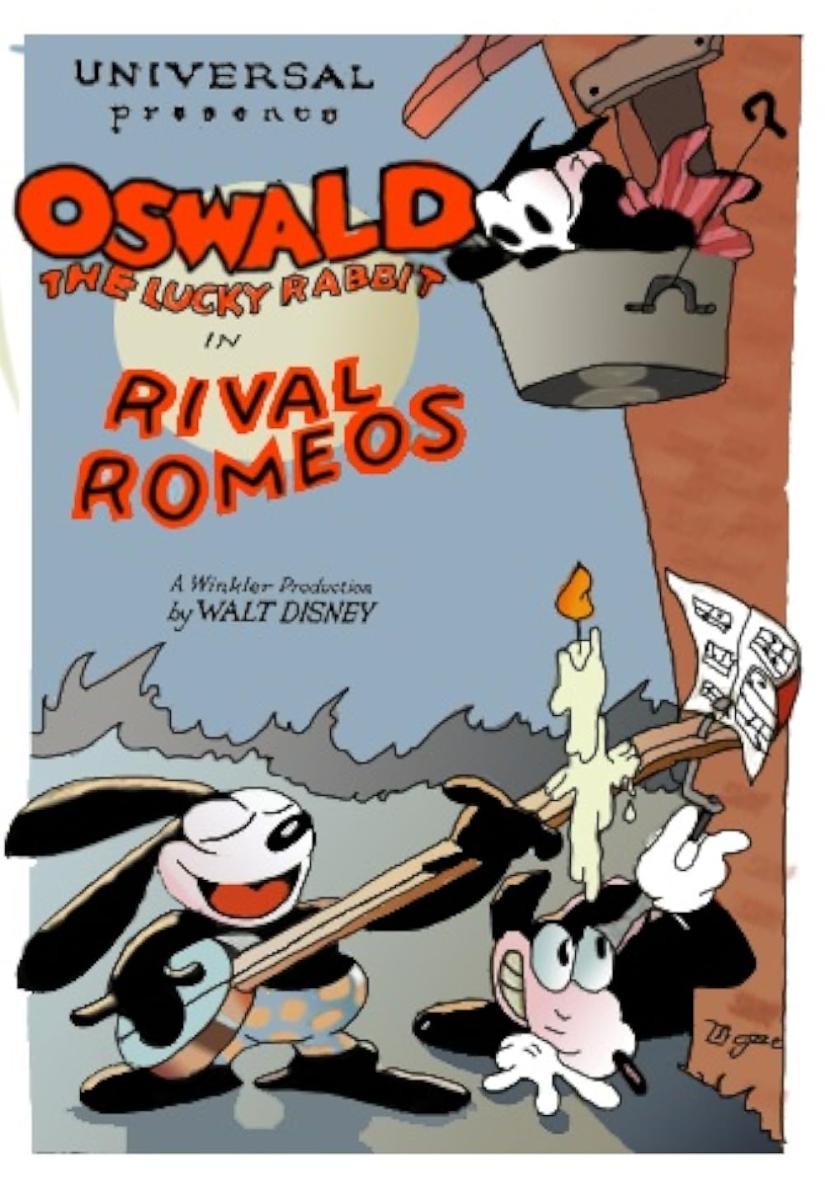
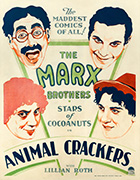
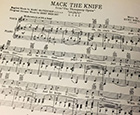
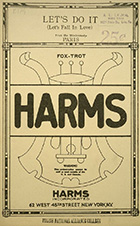

.jpg)
